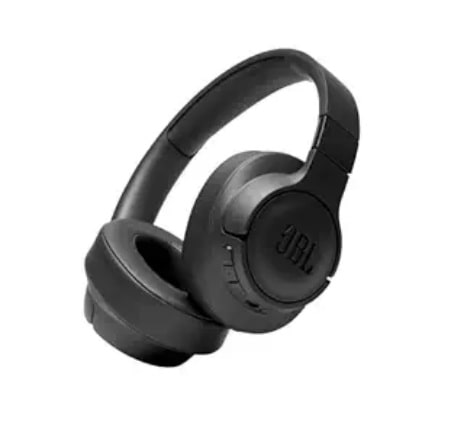Do you like to delve into a world of headsets? You will come across terms like on-ear and over-ear headphones. These audio accessories appear to be the same. Right? A headband frame connecting the earcups is the common feature of these headphones. On-ear headphones are super-aural and sit properly on your ears. But, over-ear headphones are circumaural and sit comfortably around your ears. So, which model suits your purpose better? Read the comparative details of on-ear vs over-ear headphones.
Understanding Over-Ear Headphones
What are over-ear headphones? Over-ear headsets have large earcups to fully enclose your ears. They physically block out ambient noise and provide significant sound isolation.
Most music professionals and audiophiles prefer using over-ear headsets because of their large drivers. These headsets allow you to hear a more detailed sound. The large-sized earcups also help with consistent pressure distribution around your ears.
Understanding On-Ear Headphones
What are on-ear headphones? These headsets directly sit on your ear but do not enclose it. Unlike over-ear models, on-ear headphones have smaller earcups. The sound isolation level is not the same when compared to the over-ear headsets.
However, on-ear models are more compact and lightweight, allowing you to carry them anywhere without a hassle. But, the pressure applied to your ears may lead to a slight sound leakage. So, other people around you may feel disturbed when you listen to songs in a quiet place.
On-Ear Vs Over-Ear Headphones- Which Produce Better Sound?
Over-ear headphones are known for better audio quality compared to that of the on-ear counterparts.
Over-ear headphones ensure a better fit and have bigger drivers to generate high-resolution audio. You will experience deeper and stronger bass response with these headsets.
Bigger drivers create more power by pushing more air. Their wider frequency response enables you to hear more detailed music. You will hear realistic sounds with the open-back, over-ear headphones.
In case of on-ear models, smaller earcups affect sound perception. Still, you will not feel fully disappointed at the sound quality provided by these headsets.
On-Ear Vs Over-Ear Headphones- Which Are More Comfortable?
Over-ear headphones are more comfortable and ergonomic than on-ear models.
Comfortable headphones allow you to have a pleasant music-listening experience without feeling ear pain. The comfort level is a subjective matter and depends on your ability to achieve the desired fit.
However, it is easier to wear over-ear headphones because of their well-padded design. They do not cause much strain on your head.
But, the in-ear models directly apply pressure to your ear canal. So, you may feel fatigued within a short time.
On-Ear versus Over-Ear Headphones- Which Have Better Noise Isolation Ability?
Over-ear headphones win this competition.
Although on-ear headphones are compact, they do not have strong noise isolation ability. Their design allows external sounds to leak in. In a quiet environment, they are not the right choice.
But over-ear headphones create a seal around your ears. Their earcups prevent external noise from affecting your experience. So, they are best if you are looking for noise-isolation headphones.
Which Headphones Are More Stable- Over-ear Versus On-ear?
On-ear headphones stick more firmly to your head.
Smaller and lighter headphones do not alter their position during movement. When using full-size headphones for sports, stability is the most significant factor. It prevents headphones from getting detached from your head. You may also wear the on-ear headsets during your physical workouts.
On the contrary, as over-ear headsets are heavier, they will bounce slightly, when you play sports.
On-Ear Versus Over-Ear Headphones- Which Ensure a Longer Battery Life?
Both models provide an impressive output in terms of battery. But, over-ear headphones have larger earcups with more space inside. So, they have bigger and longer-lasting batteries.
The standard playtime for most on-ear headsets is around 40 hours. If you activate additional features (such as active noise cancellation), the battery life will be less.
As over-ear headphones have bigger earcups, the maximum playtime is around 90 hours.
Do On-Ear and Over-Ear Headphones Have Headband Paddings?
A headband is the frame connecting 2 earcups. Over-ear headphones have a headband with thicker padding. On-ear headsets are not heavy, as they have less padding.
Final Verdict
The brief discussion on on-ear vs over-ear headphones gives a comparative view of both models. Make the right choice depending on your listening habits and preferences. On-ear headsets are more compact and portable. But, if you want better sound quality, over-ear models are a good choice.

